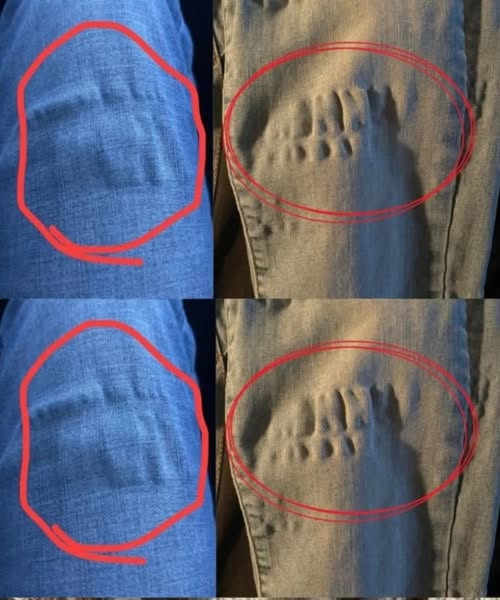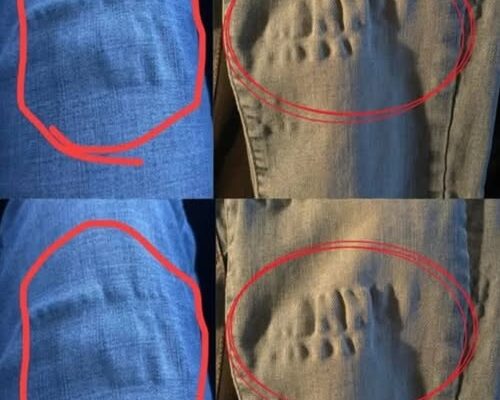Why Your Jeans Come Out of the Wash with Ripples—And How to Fix It If your favorite pair of jeans comes out of the laundry looking a bit… wavy—especially around the seams, inner thighs, or knees—you’re not alone. These ripples and puckers are common issues that frustrate denim lovers everywhere. The good news? They’re often not permanent, and understanding what causes them can help you avoid further damage.

🔍 The Real Reasons Behind Those Ripples
1. Uneven Fabric Shrinkage
Denim, typically made from cotton, naturally shrinks when exposed to heat and moisture. But not all parts of a pair of jeans shrink equally:
-
Seams and reinforced areas, like pockets or the waistband, may contain more stitching or thicker fabric layers, which react differently to heat.
-
When these areas shrink more than the surrounding fabric, they cause the fabric to bunch or ripple.
This is especially common after hot washes or drying on high heat—a combination that essentially “bakes” the shape in.
2. Tension from Manufacturing
Even before you wear them, your jeans may already be stressed. During production, denim pieces are stitched together with varying degrees of machine tension:
-
Aesthetically, they look fine when new.
-
But after washing, the fabric can relax unevenly, especially if it wasn’t properly pre-shrunk or stitched with consistent tension.
This is more common in mass-produced or budget-friendly jeans, though even high-end brands can fall victim depending on design or material mix.
3. The Stretch Factor
If your jeans have elastane, lycra, or spandex for that comfy stretch, you may notice even more rippling over time. These synthetic fibers:
-
React differently to water and heat than natural cotton.
-
May shrink unevenly, degrade with age, or lose elasticity, especially with repeated laundering.
The result? Twisted seams, distorted thighs, and stretched-out knees.
4. Overloading the Washer
Stuffing too many clothes in your machine causes more than poor cleaning:
-
Jeans can get tangled, twisted, or agitated too harshly.
-
Especially when washed with heavier items like towels, they may stretch or contort mid-cycle.
This mechanical stress can pull seams and warp the fabric.
5. High-Heat Drying
A hot dryer may feel efficient, but it’s denim’s worst enemy:
-
High heat dries out and weakens fibers, especially cotton.
-
If ripples or puckers form during the wash, heat can lock them in permanently.
Over time, jeans dried on high will become stiff, brittle, and shapeless.
How to Prevent Rippled Jeans
To keep your denim looking its best, here are practical tips you can use:
-
Wash in cold water: It minimizes shrinkage and helps preserve shape.
-
Turn jeans inside out: Reduces abrasion and protects fibers.
-
Use a gentle cycle: Less agitation means less stretching or pulling.
-
Avoid mixing with heavy items: Wash denim with similar-weight clothes only.
-
Don’t overload your machine: Give jeans space to move freely.
-
Skip the dryer: Lay jeans flat or hang to air dry to avoid heat damage.
-
Smooth out wrinkles while damp: Gently tug seams into place as they dry to reset the shape.
Bonus tip: If you must use a dryer, tumble on low for 5–10 minutes, then remove and air dry while damp.
What If the Damage Is Already Done?
If your jeans already have ripples:
-
Steam them with a handheld steamer or hang them in the bathroom during a hot shower.
-
Iron on low heat using a pressing cloth to avoid damaging stretch fibers.
-
Wash again using proper methods, then reshape while damp and lay flat to dry.
In severe cases, a tailor may be able to help reset seams or reinforce warped areas.
